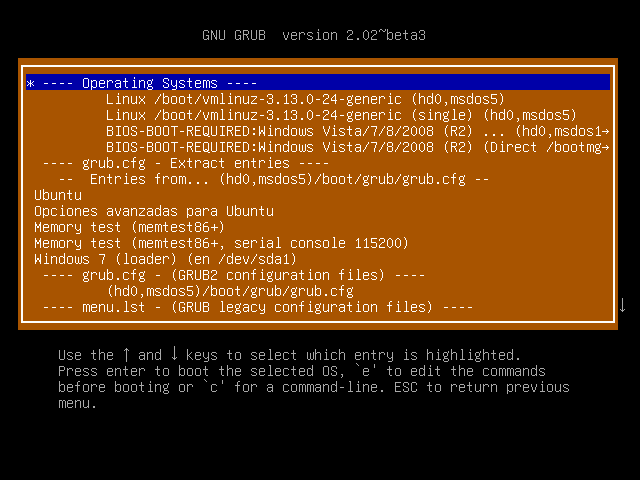-
Grub Bootloader Iso Download카테고리 없음 2020. 2. 18. 07:11
Welcome to the GRUB 2 bootloader tutorial! You must have read my GRUB legacy guide. In the last two and a halfyears, it alone has garnered some half a million views, proving to be quite popular and useful to computerusers worldwide.I want to recreate the same success with my GRUB 2 tutorial. My goal is to provide people running any flavor ofUNIX-like operating systems or multi-booting their computers and using GRUB as their bootloader with a simple,no-nonsense, step-by-step, proven and working tutorial that should allow them to quickly, easily and painlesslycontrol the boot sequence of their systems.In this tutorial, you will learn how to work with GRUB 2, add and remove menu entries, customize titles andboot options, dual-boot and triple-boot operating systems, combine legacy GRUB and GRUB 2, and we will even seehow Windows fits into this scheme. After that, we will learn how to recover from errors and mistakes. Followme.Table of Contents.WarningWarning! GRUB 2 is still mostly beta software.

Although it already ships withUbuntu flavors, it is not yet production quality per se. You can probably use it without any troubles, althoughthere is a slight, remote yet possible chance of damage.You need to be aware of this. Furthermore, whenever handling delicate tasks like the critical functions of thesystem, disk partitioning, boot sequence, imaging, etc, you should always be prepared for the worst. Thismeans:. You must have a solid, proven backup procedure for all your data. You must possess the tools and the knowledge to quickly recover from disasters.
This includes being able torestore a previous system image, fix broken configurations, restore the bootloaders, and more. You must be confident in what you are doing.Now that we know this, let us proceed cheerfully and safely. Just remember thatGRUB 2 is still beta. Although the same can be claimed for Google Mail, which was beta for some six years orso, you must exercise caution. What's more, the contents and relevance of contents in this tutorial might yetchange as GRUB 2 makes into the production, so stay tuned for any updates.GRUB 2 roadmapThis is something you should consider before trying GRUB 2. When will GRUB 2 become the de facto bootloader forUNIX-like operating systems? Currently, GRUB legacy is doing fine and will continue for many more years.
Grub Rescue
Giventhe long-term support by companies like RedHat and Novell for their server distributions, GRUB legacy is goingto remain the key player for at least 5-10 years.On desktops, the adoption rate may be faster, but do not expect any miracles too soon. Nevertheless, it doesnot hurt to start exploring. Be aware that you may encounter some compatibility issues down the road,especially with more conservative distributions that do not embrace new technologies too quickly.At the time being, GRUB 2 is only used by the Ubuntu family, which makes about a third to one half of the Linuxdesktop market. That makes this tutorial rather relevant, as about one in every two or three Linux home userswill probably be interested in learning more about GRUB 2 and its uses. Let's now move on to the actualmechanics.
Contents.Return to or'grub-n-iso'IntroductionCD images of operating systems (with the ISO 9660 file system) are often distributed as iso files.Ubuntu iso files are designed to allow booting directly from the hard drive using GRUB 2 and eliminates the need for burning a CD/DVD. This feature permits the user to boot and use the 'Try Ubuntu' feature of the Ubuntu installation CD as well as to install Ubuntu directly from an iso file on the hard drive. In addition to Ubuntu iso files, many other Linux distributions as well as popular rescue CDs can be booted directly from an iso file.In order to use this feature, GRUB 2 must already be installed on the system. GRUB Legacy can not use this feature.' Grub-n-iso' for USB pendrivesThis help page describes how to create USB pendrives, that use this 'grub-n-iso' method to boot directly from iso files. The bootloader is configured to select an iso file for booting. There are some small files for the configuration, and it is quite easy to copy an iso file or several iso files to the pendrive and create a USB multiboot drive.Notes.

This method is new, and developed after the introduction of the boot parameter forcepae, that makes fake-pae obsolete.Booting 32-bit and 64-bit systems in BIOS and UEFI mode'grub-n-iso' for all PCs was developed for the Ubuntu version 14.04 LTS, which is using grub version 2-02beta2. Compared to previous versions, it can manage both BIOS and UEFI mode from the same pendrive.64-bit versions work only in 64-bit computers. 32-bit versions work in 32-bit and 64-bit computers with BIOS, and now also with UEFI. It is possible to create 'grub-n-iso' pendrives that boot most PCs with Intel and AMD processors according to the following 'BIOS and UEFI' links.UEFIBut old style 'grub-n-iso' does not work in UEFI mode.If you want to boot in UEFI mode and install your Ubuntu flavour alongside Windows, you can use for example the ubuntu-14.04.2-desktop-amd64.iso directly.LinksThere is a good wiki page aboutGeneral 'grub-n-iso' links'BIOS and UEFI' links.